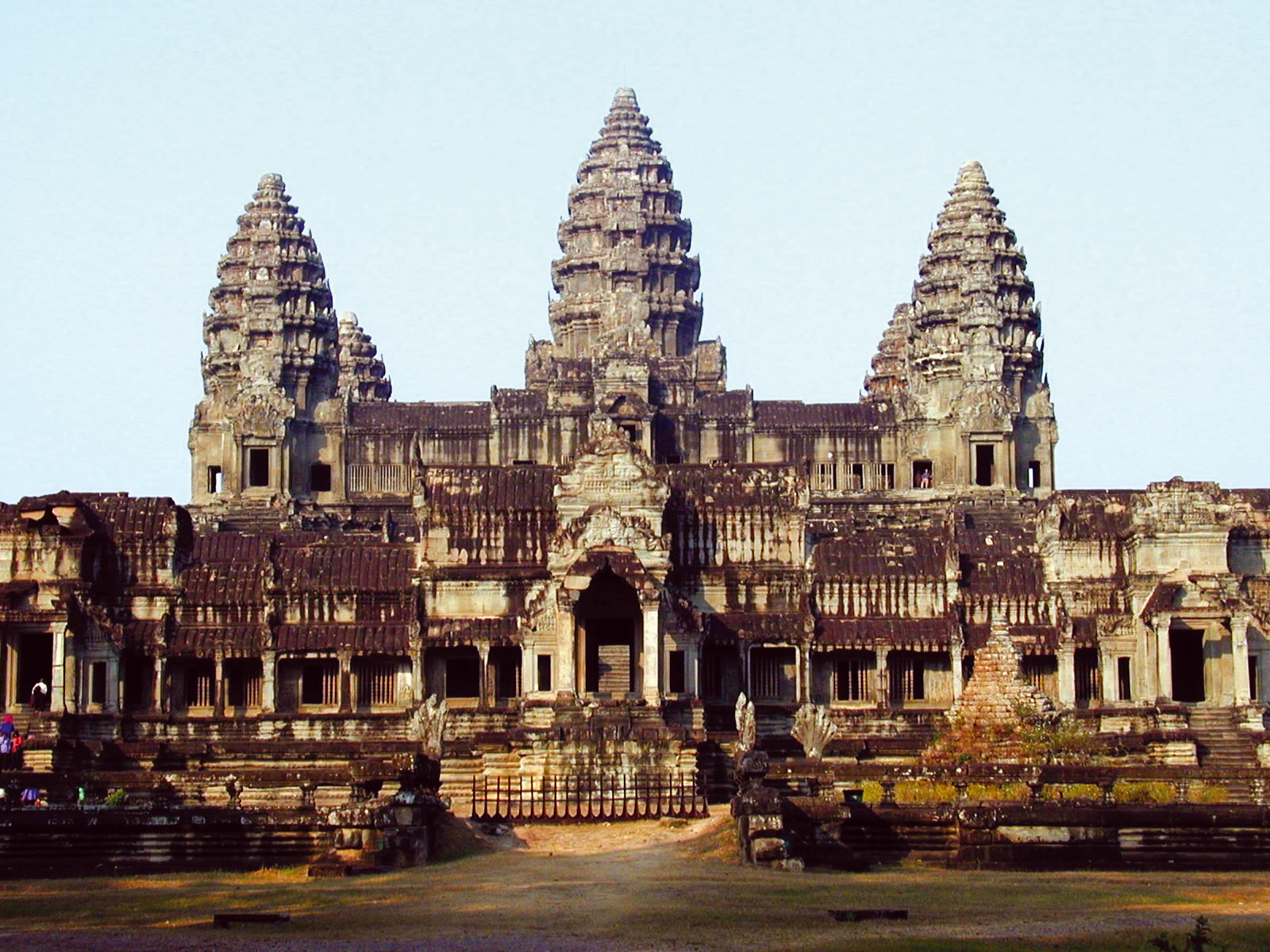Angkor Wat
At the heart of Cambodia, you can see one of the largest religious structures in the world. Surrounded by a three-mile moat and larger than 200 hectares is Angkor Wat. Angkor Wat means the ‘City of Temples’.
It was built between 1113 AD and 1150 AD by the Khmer king Suryavarman II. He built it to honour the Hindu god Vishnu. The large central tower housed the statue of the god. The workers built rafts that ferried large sandstone blocks 50 kilometres down the Siem Reap river. There were over 300,000 workers and 6,000 elephants used to build the temple. In the 14th century, it became a Buddhist temple.
Beautiful artworks in the forms of paintings, statues and mosaics can be found throughout the temples. Most were carved in the sandstone bricks. Thousands of beautiful angels, called apsaras, are present throughout the temple. Each one is unique. The Khmer empire was advanced and prosperous. They knew that the earth was round, and designed Angkor Wat to mark important lunar moments. They were able to have 3 rice harvests a year by using a sophisticated water system of canals.
Until the 18th century, Angkor Wat was the largest city in the world, with over one million people.
Today, Angkor Wat is voted by tourists as the number one UNESCO heritage site. Every year, over one million tourists visit Angkor Wat.

